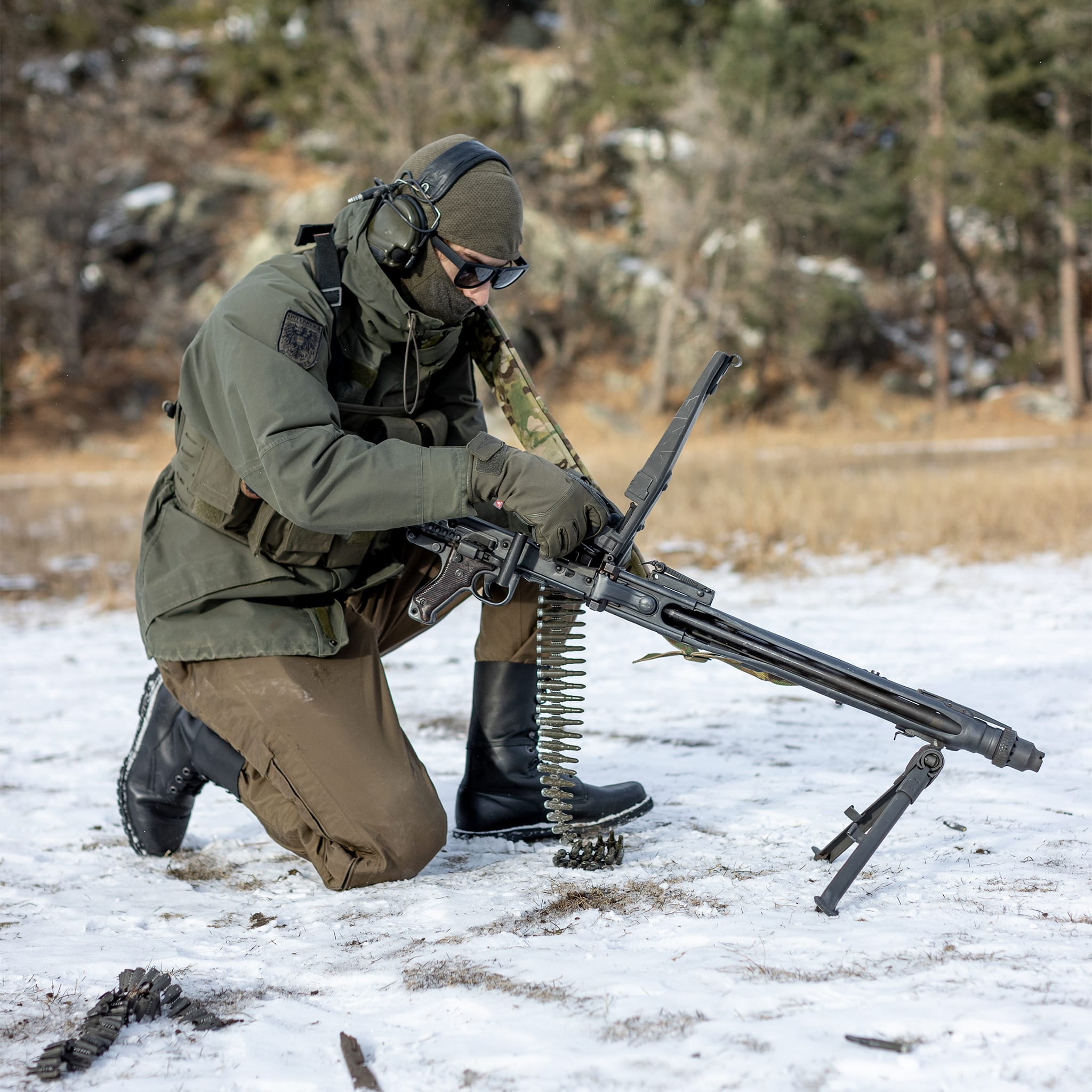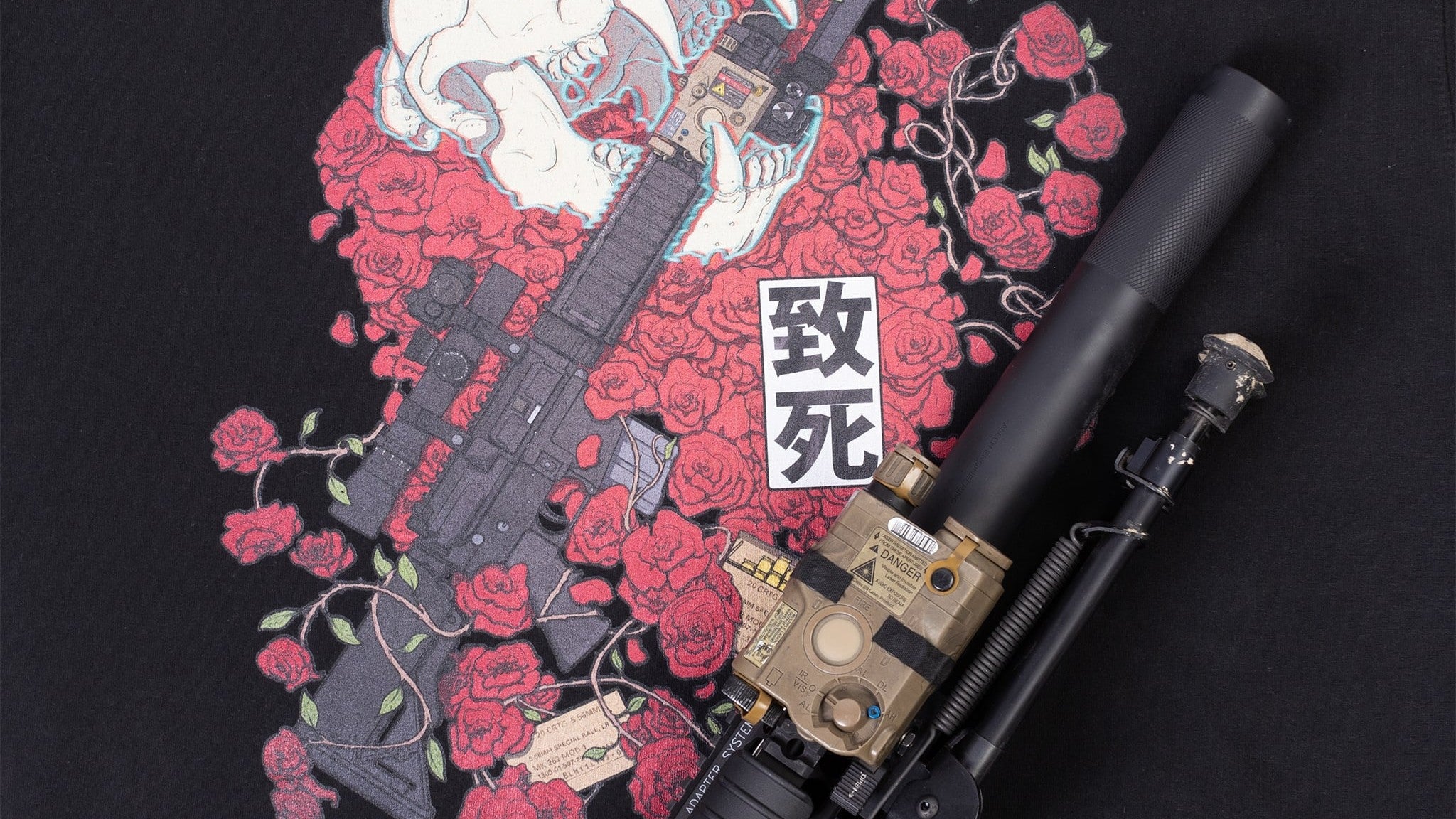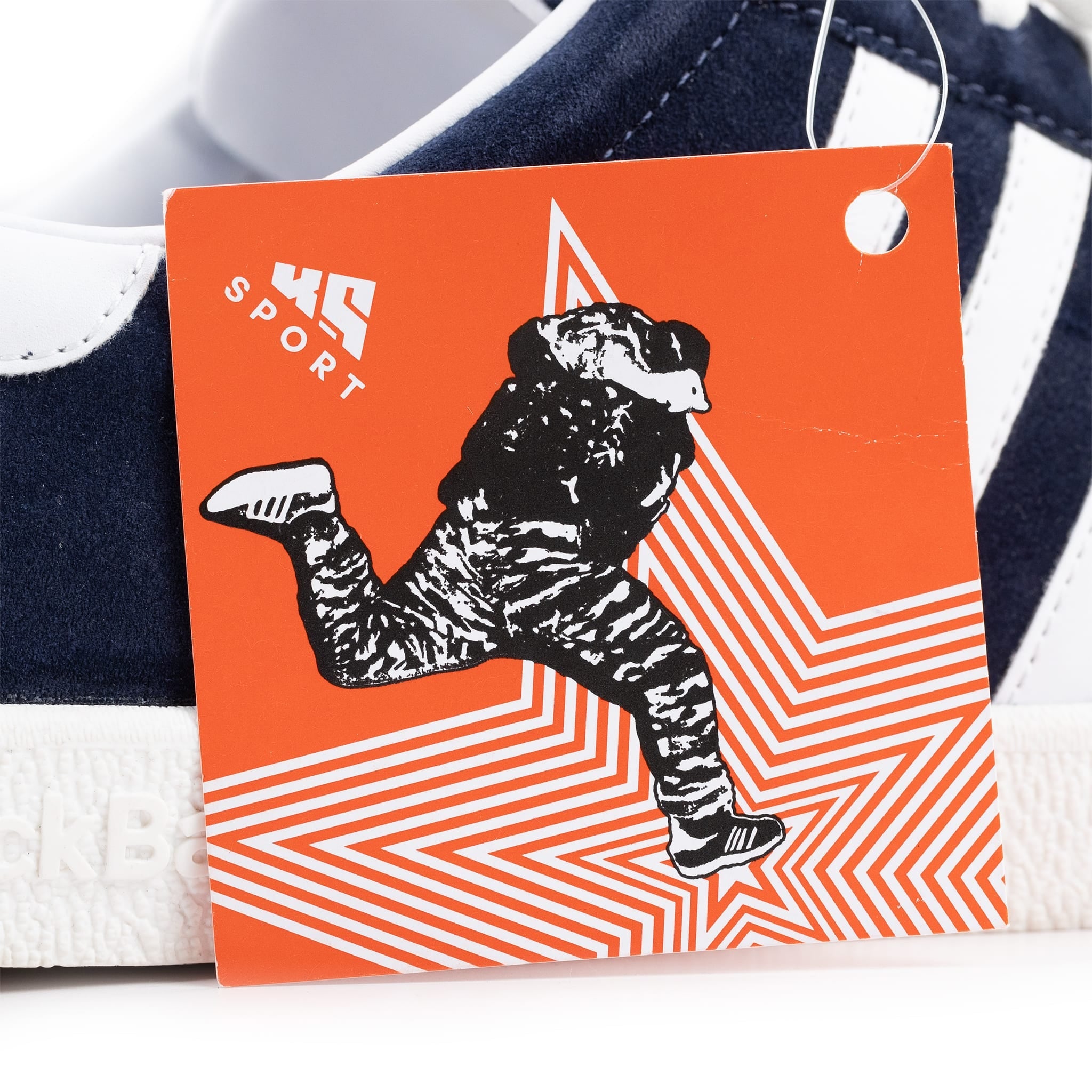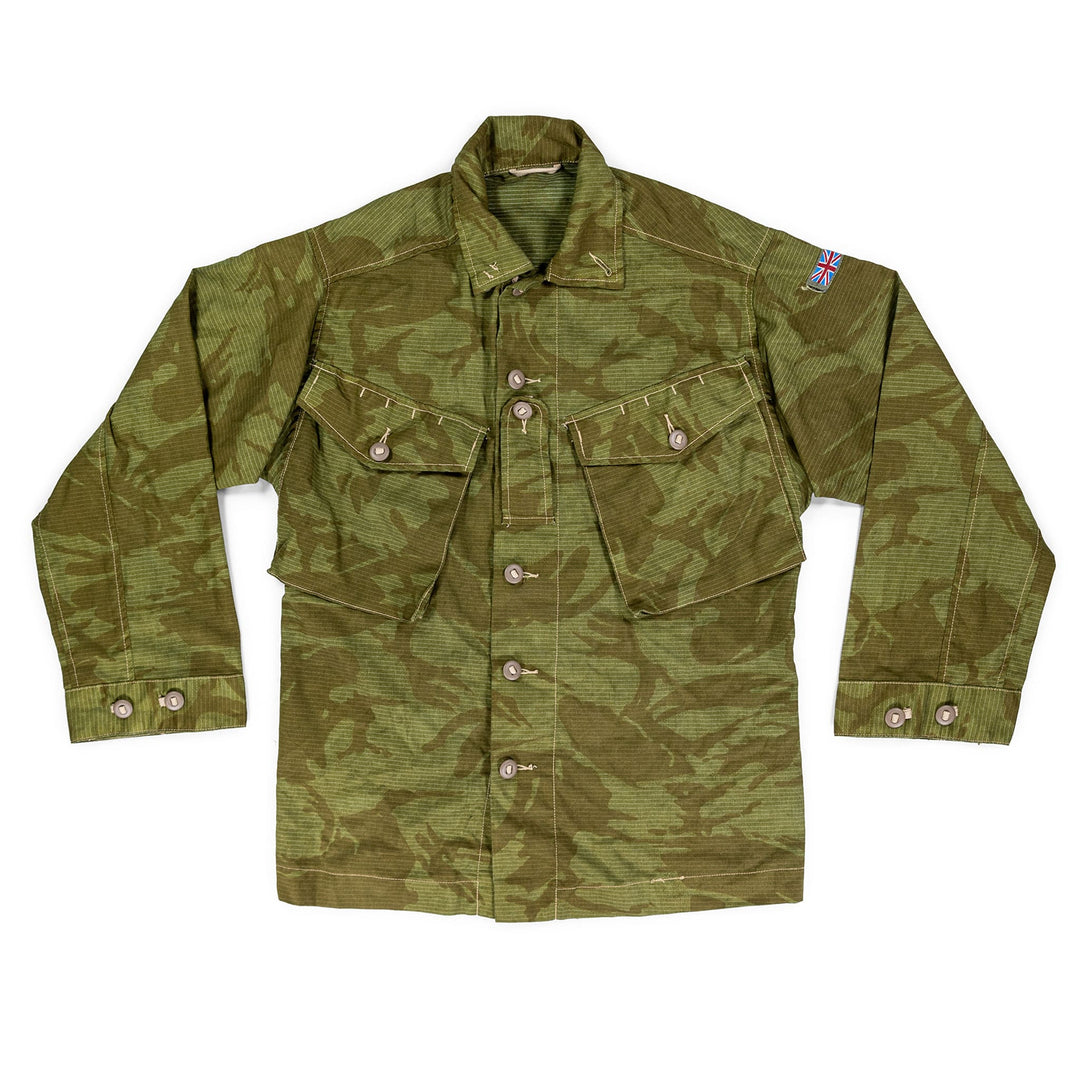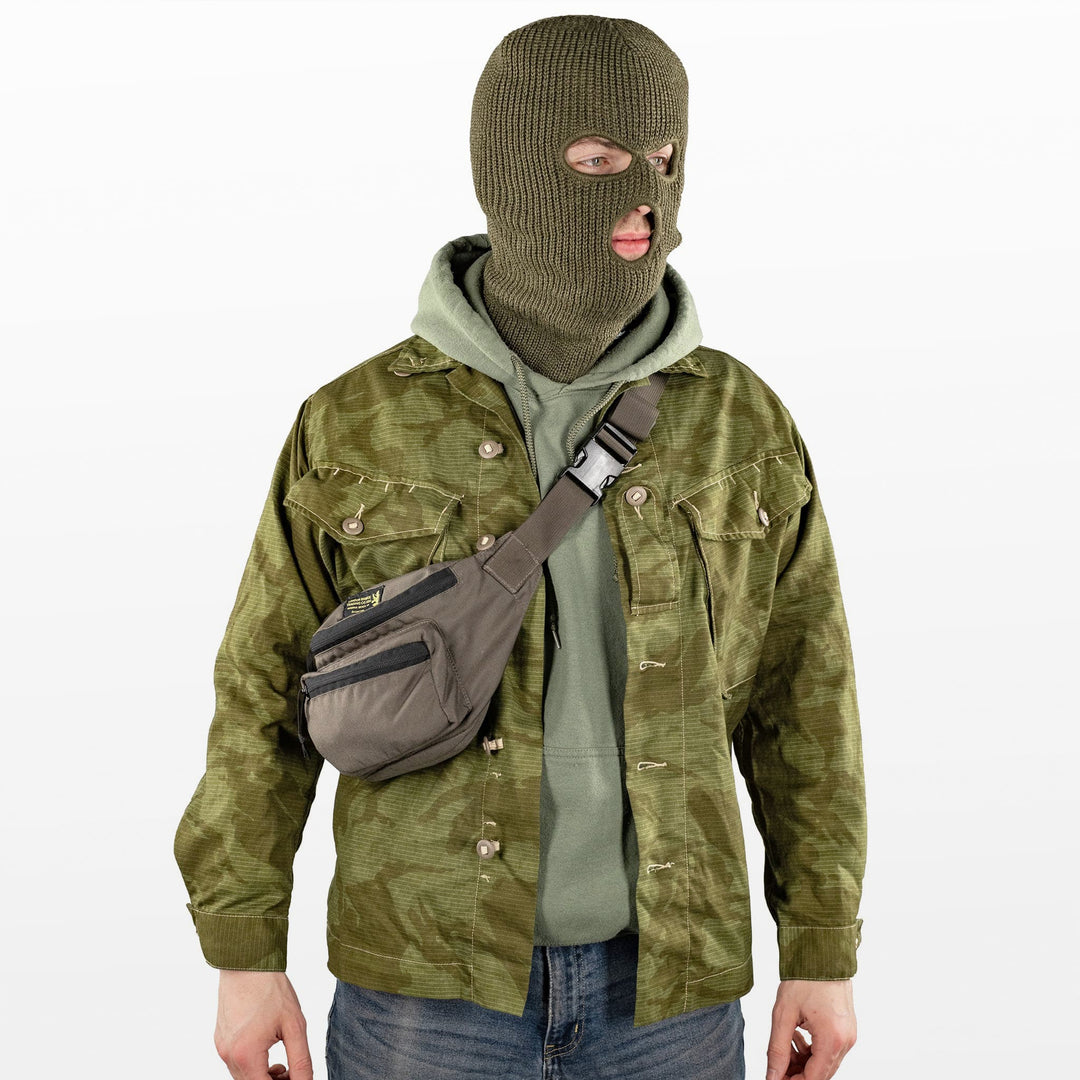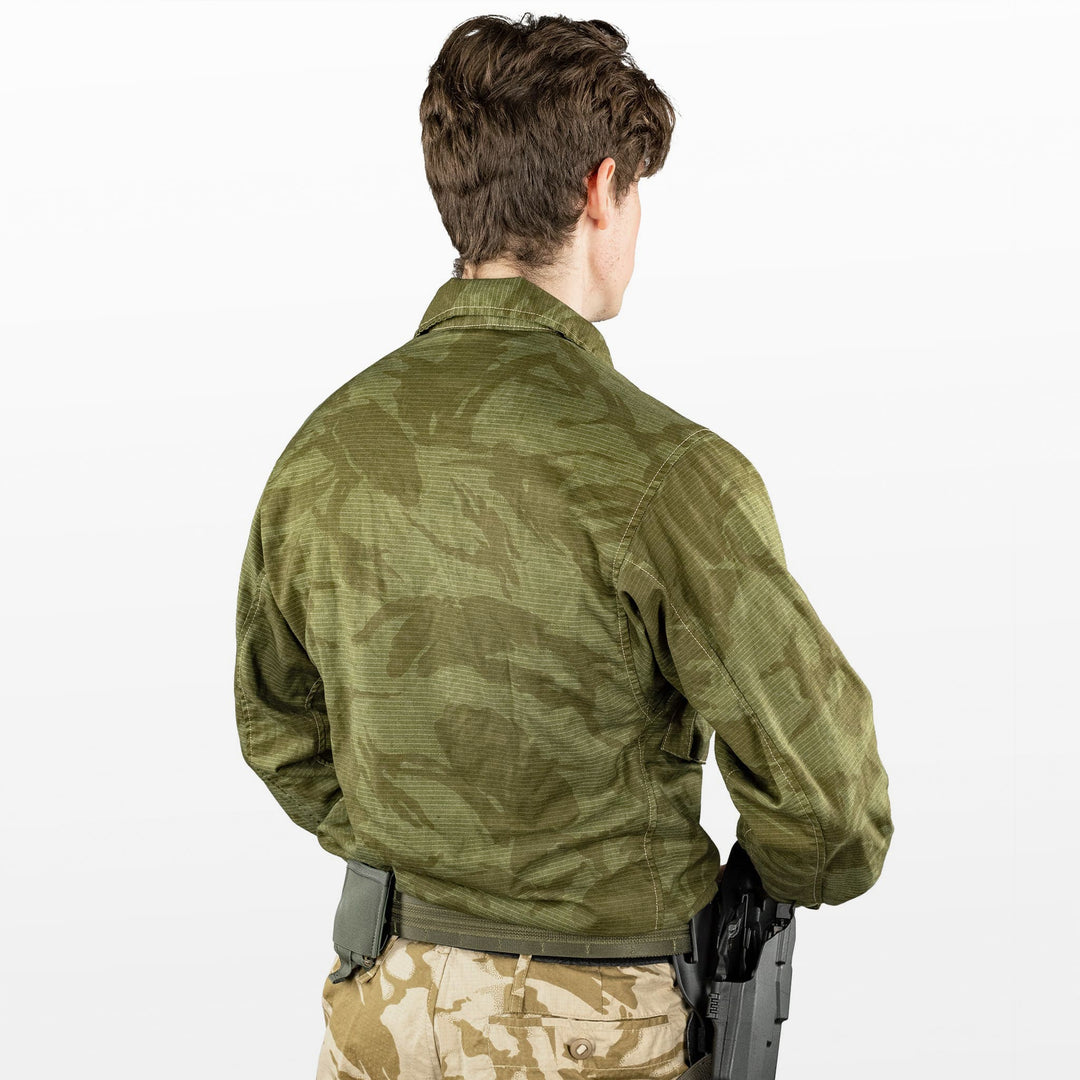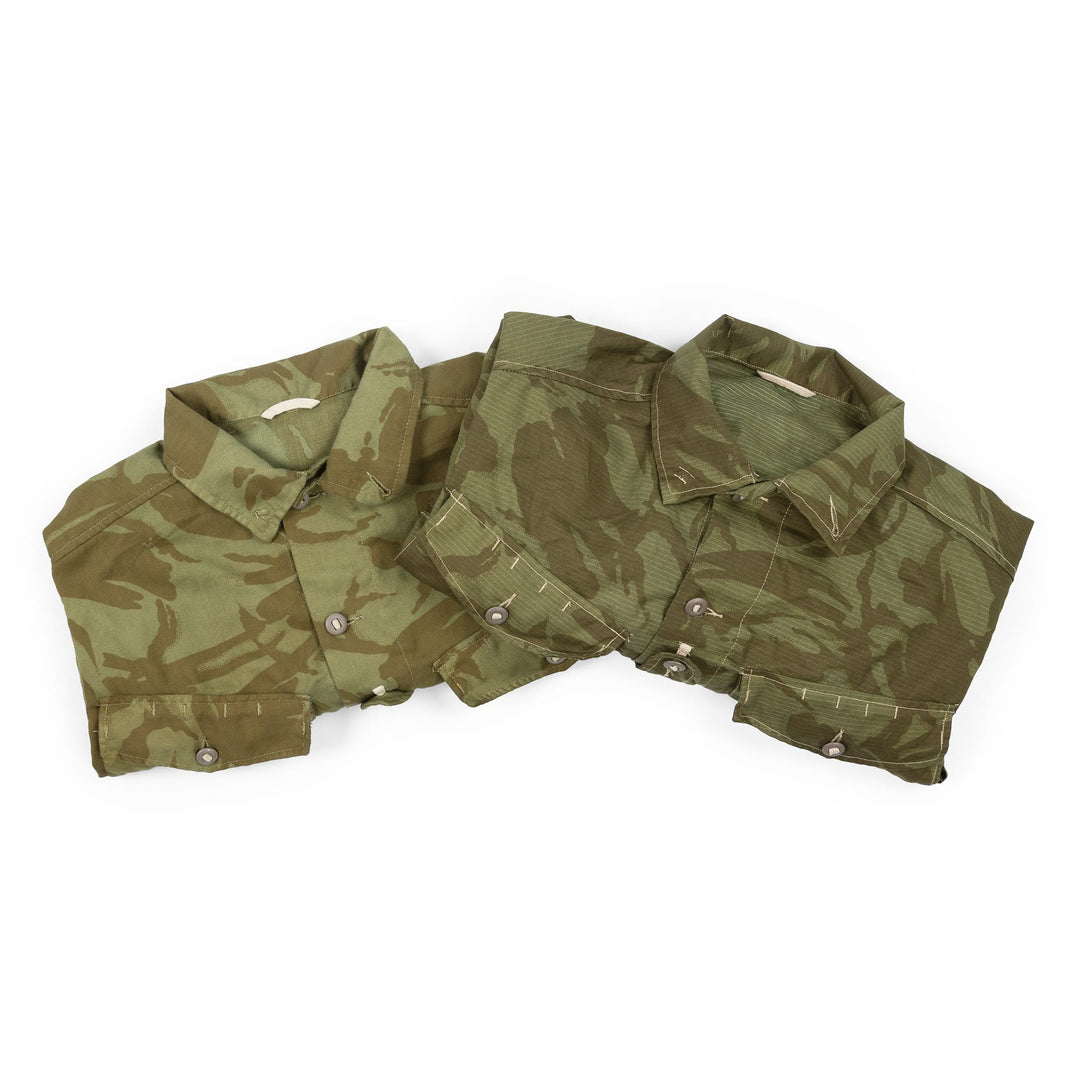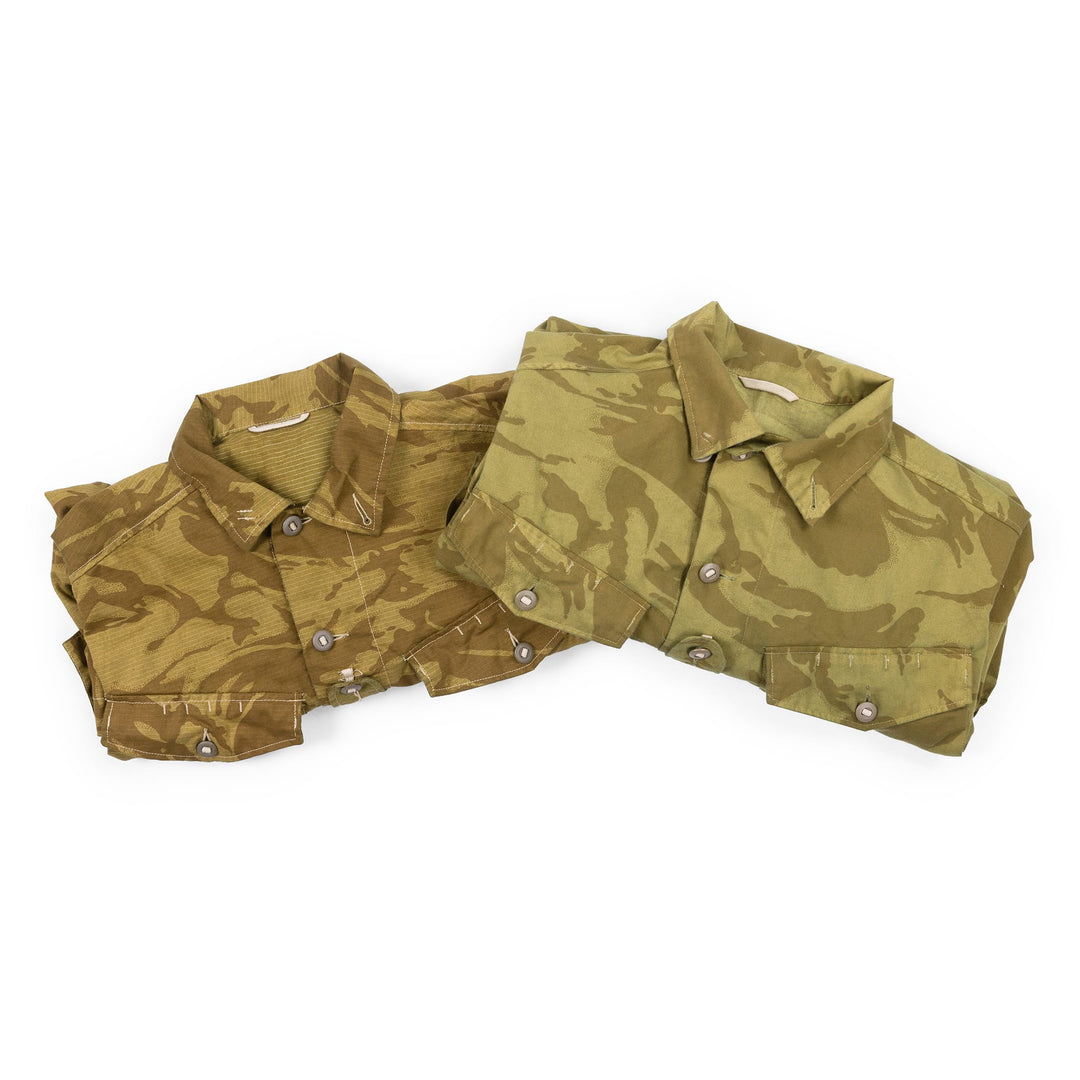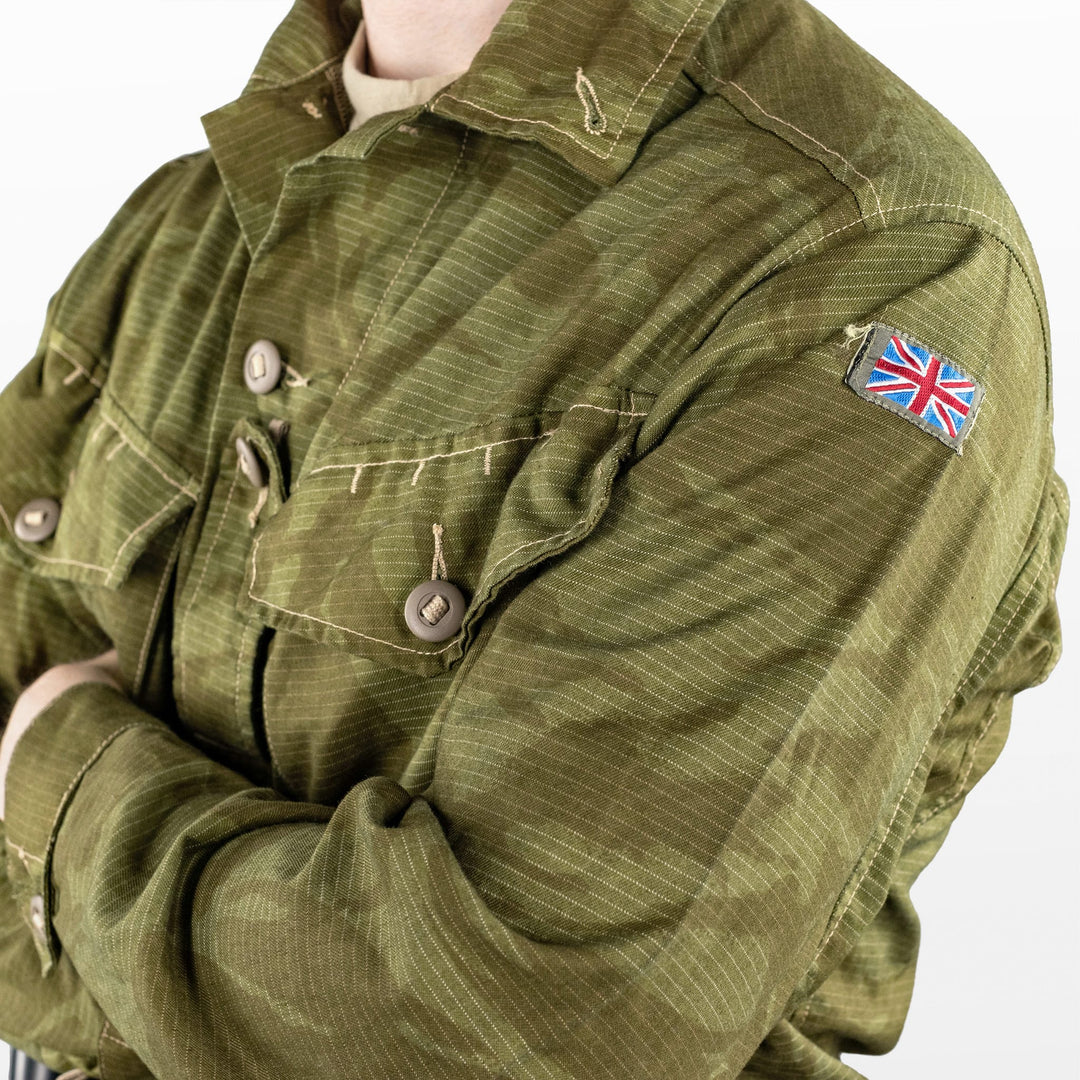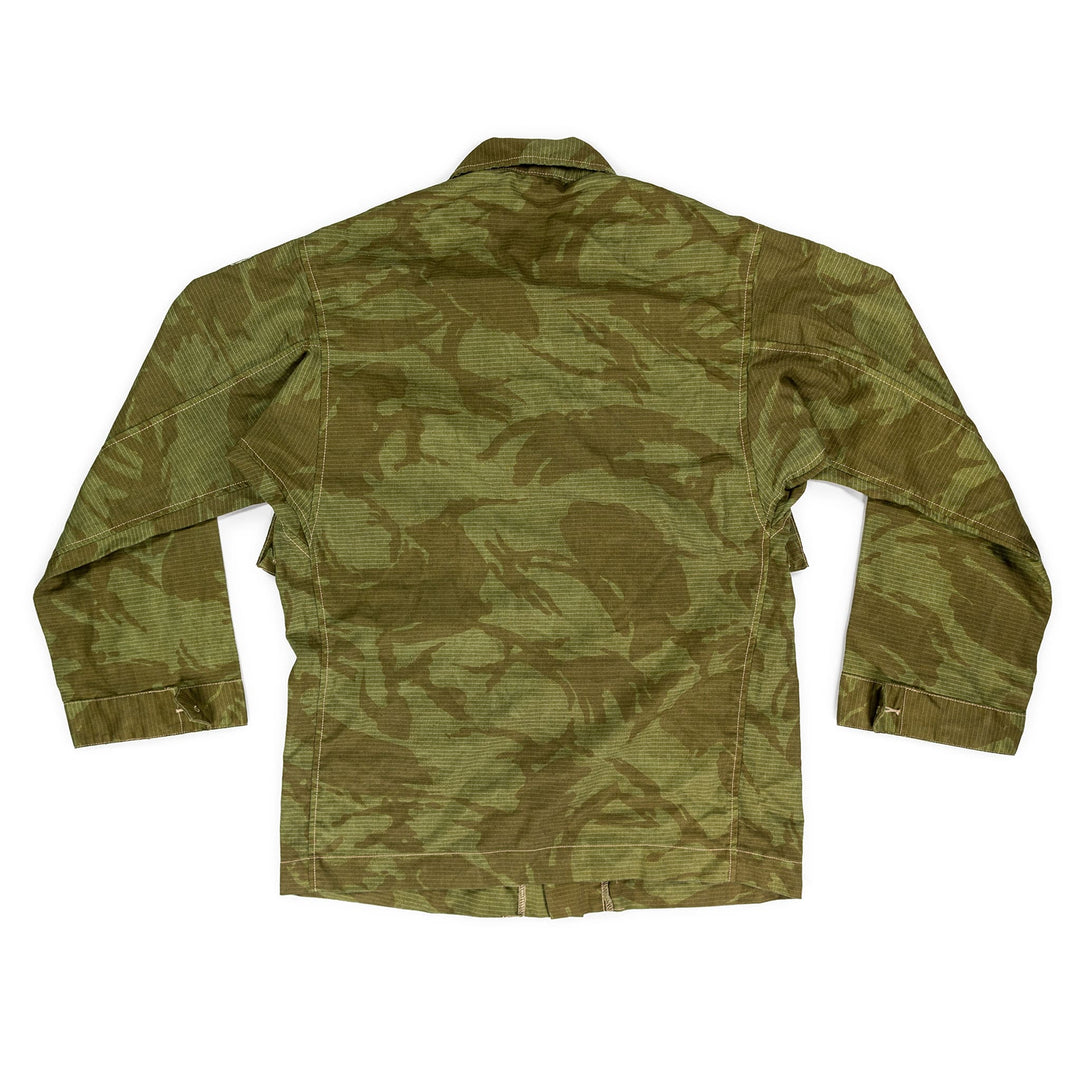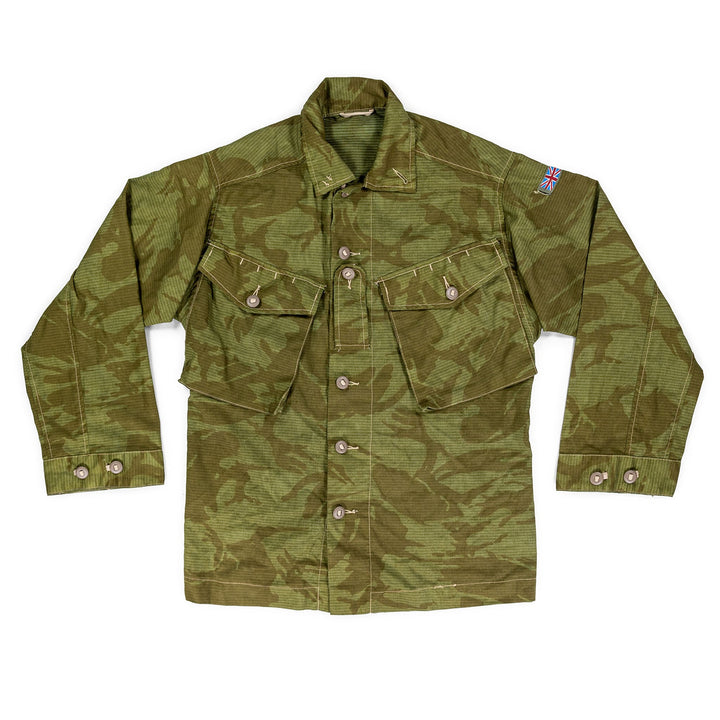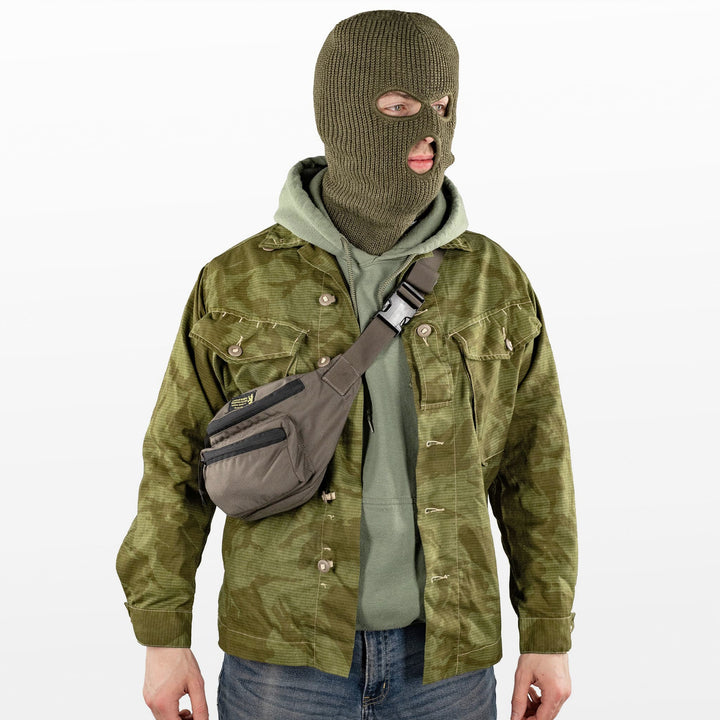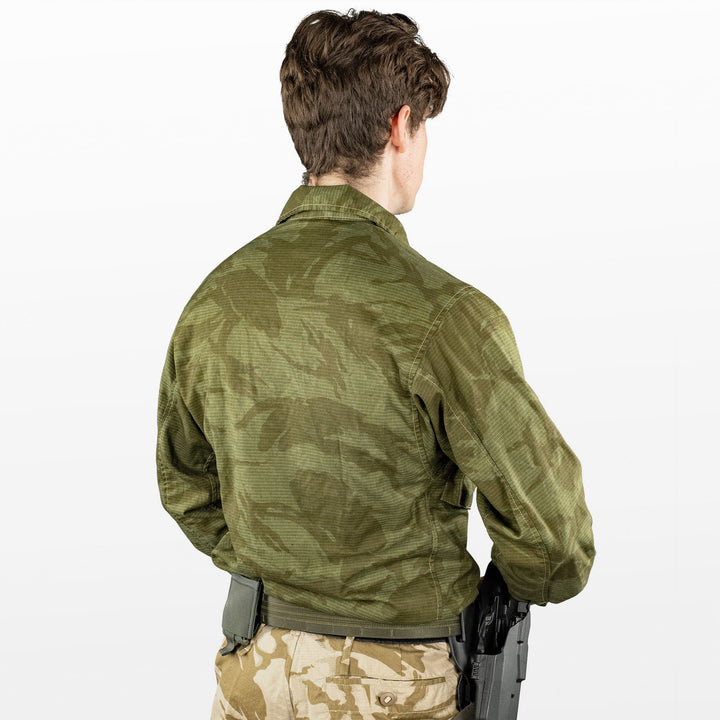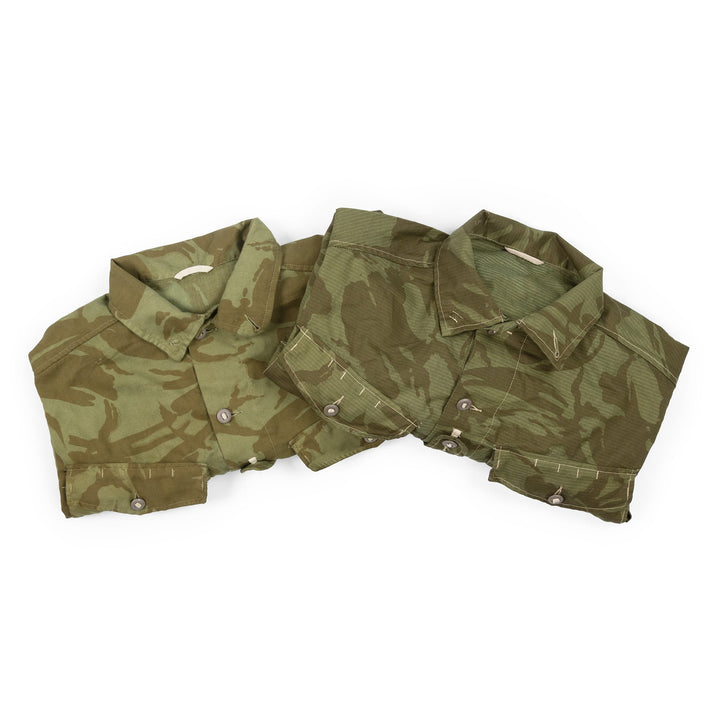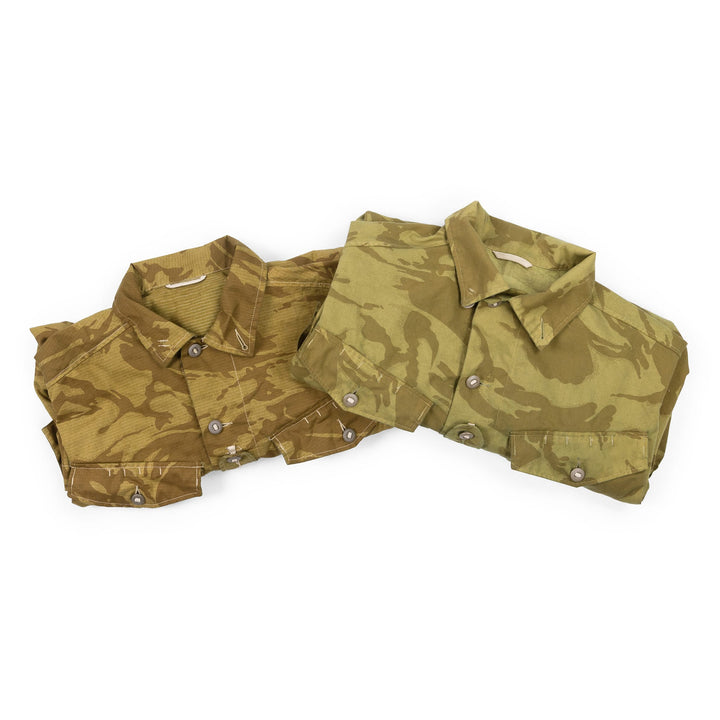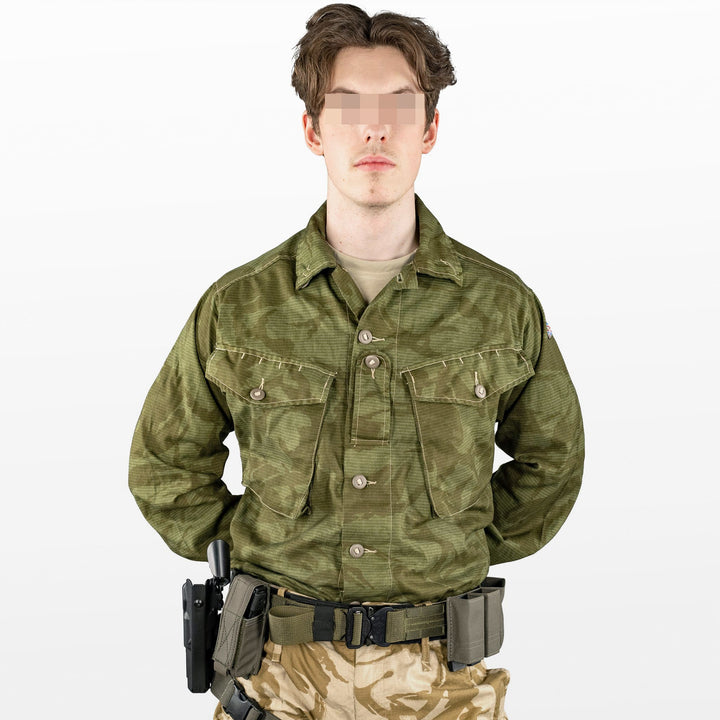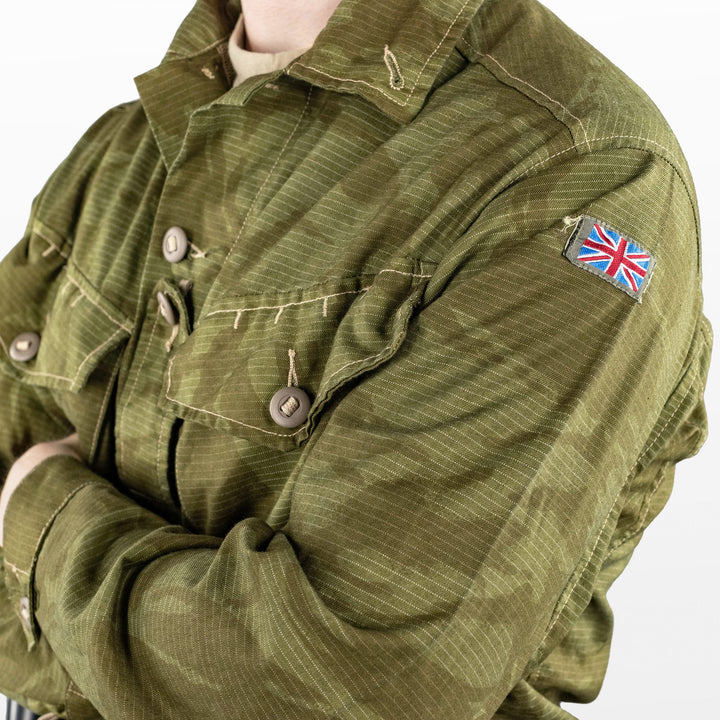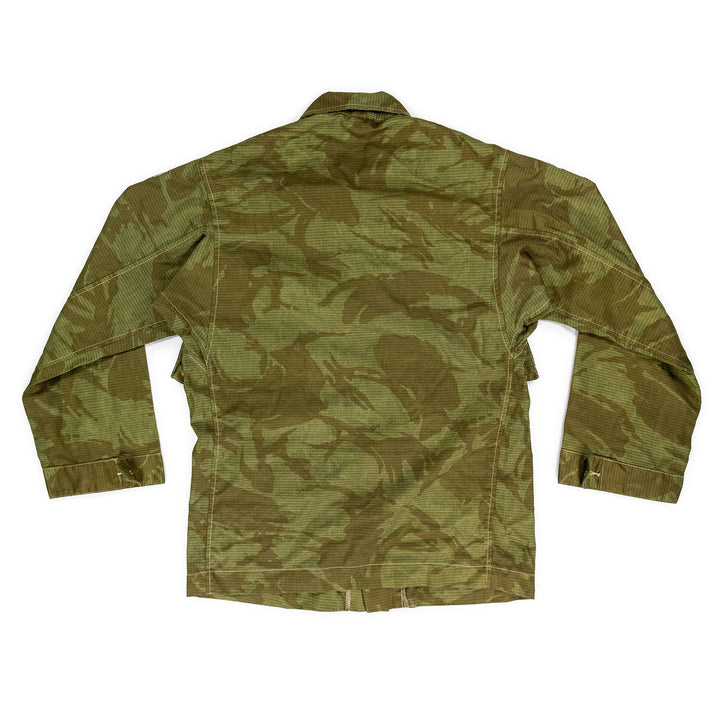British 'Green Zone' DPM Field Shirt
- Low stock - 6 left
- Backordered, shipping soon
- Dyed In-House at KommandoStore
There are two resulting variants of green zone due to the nature of cotton dye when it interacts with different mixes of fabrics: MOD A (Arid, left) and MOD T (Tropic, right).
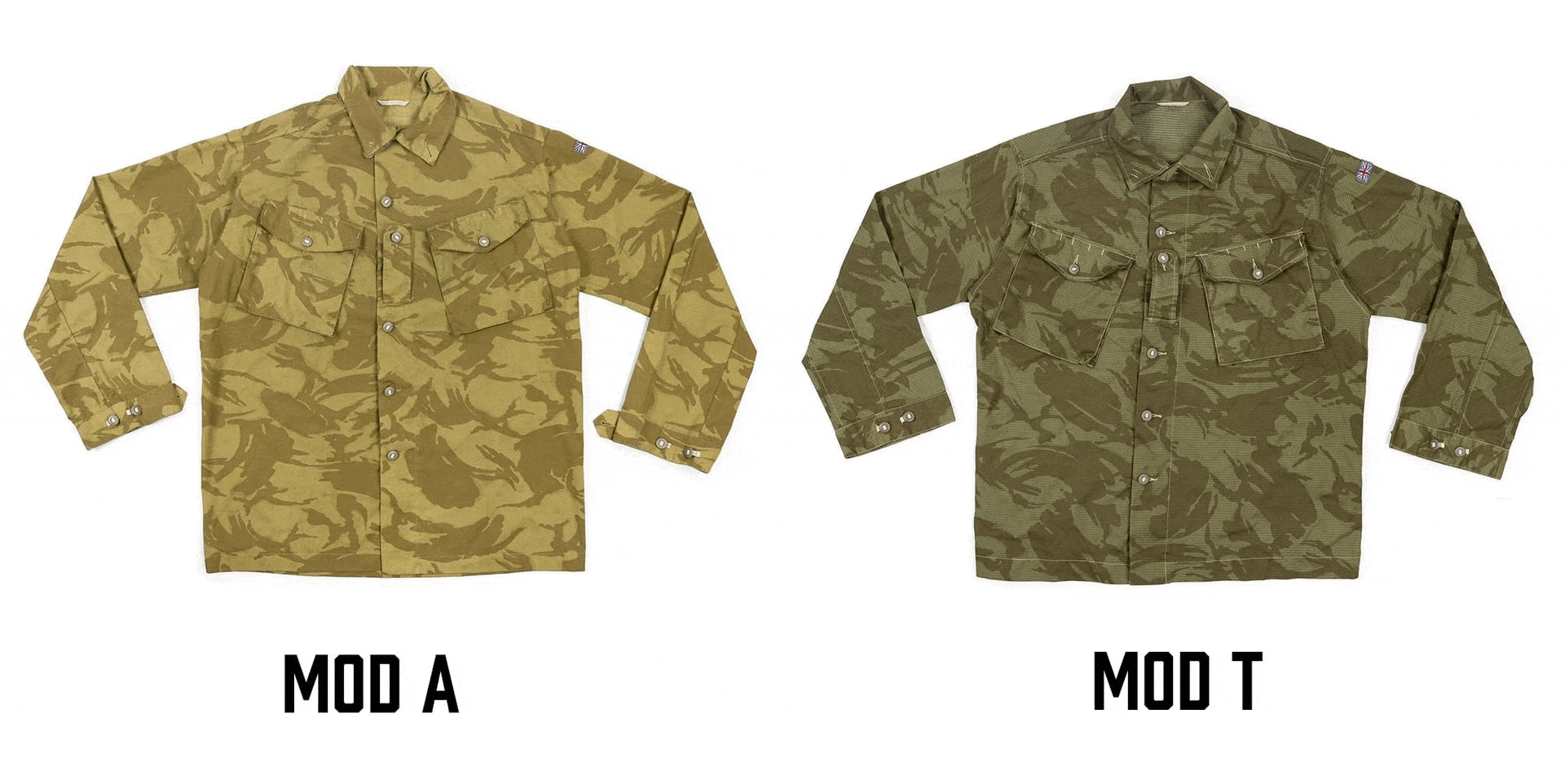
The less cotton-mixed shirts end up with a yellowish green (MOD A) and the higher cotton content shirts end up with a much deeper, more OD-like green (MOD T).
MOD T goes great with MultiCam Tropic and a variety of greens, while MOD A goes better with tans and browns that match or complement the main body of the shirt.

'Green Zone' is our proprietary desert DPM dyeing secret formula that gives it a fresh, green look that you can mix and match with all your favorite gear. As far as we're aware, nothing else like it is available on the market, and thanks to our reactive dye techniques (more on that in the "Dyeing process" section) it stays colorfast for many, many washes to come!
In 2025, we've also begun to do all the dyeing in house, with several successful runs of "Versengtarn" flecktarn dyeing and "Wellenbrecher" tropentarn dyeing behind us.
What's DPM?
DPM, or Disruptive Pattern Material has seen use across countries in many theatres since the 1940s (mainly in those associated with the British Commonwealth). It was also infamously used by the Irish Republican Army during The Troubles.

Desert DPM, which is what we started out with, was extensively used in the Gulf War, operations in Afghanistan, and is still used today in many parts of Sub-Saharan Africa. Optimized for the completely arid landscapes of the Arabian gulf, it's sandy tones blended in well to sand, but not much else...

The field shirt's mechanical design also has a long history with only minor changes being applied over its service. The phrase "If it ain't broke, don't fix it" certainly comes to mind. It's become a long-time staple of surplus inventories worldwide.
Dye or Die
As several conflicts raged in the middle east during the 90s and 2000s, the shortcomings of the iconic pattern shone, with many troops resorting to DIY dying their issued garments in the field to make them more versatile in a pinch.
British Troops worked with what they had hastily dyeing their Desert DPM to better match the environment of the 'Green Zone' of Afghanistan. Some examples turned out worse than others, becoming overdyed in the process. Results were mixed and commonly ended up in wild shades of turquoise and emerald green.

The MoD eventually saw the shortcomings of DPM. With the Helmand province's characteristically un-Afghani greenery, it posed a death sentence to troops marching in with their bright tan fatigues. They got to work on several experimental camos based off of their existing DPM to replace the tried-and-true DPM but ultimately, these camo trials were a long process that the troops couldn't afford to wait for completion.

The result was very similar to OCP/Multicam, with many of the brush stroke like elements of DPM remaining present, and the MoD dubbed it "multi-terrain pattern" (MTP). It was miles better than what was currently fielded, but ultimately seemed like too little too late for some of the troops on the ground.
As MTP slowly started to replace DPM, a very small amount of field-overdyed surplus came and went on the market, and astute collectors slowly pieced together the odd story of the MoD's experimental era.
'Green Zone'
As said, there are genuine field-modified articles ranging from turquoise, navy blue, and other colors floating around on the used market - but they're incredibly scarce, and we think the idea is cool enough that we wanted to pay proper tribute.
We wanted to take the original goal of the forces in the Green Zone and do it how they would have wanted it — A new pattern, better suited for a wider range of environments.
The 'Green Zone' colorway takes desert DPM into the tropics with a fresh coat of green, while keeping the disruptive pattern intact.
When the genuine dyed ones originally hit the market, they even got some reputation as streetwear in the UK much like M81 Woodland did stateside. Now, you might even catch some sportswear brands ripping the DPM pattern and changing the colors a bit for fashion...
Specs
- 30/70% poly/cotton mix.
- Dyed, re laundered, and QC'd in-house by KommandoStore!
- Two front 7.5" x 8" pockets.
- Button fastened (Some may Include Zipper in addition to buttons)
- Collar button to pop collar for various practical and egotistical uses.
- Cuff tightening buttons.
- Strap on the front for attaching rank tab.
- May feature Union Jack on shoulder or other unit patches.
Sizing
These field shirts are measured in cm using height and chest circumference. The sizing intervals are decently far apart, so you may want to round up or down depending on how you want the shirt to fit (tight like a shirt, or looser like a jacket).
Dyeing Process
The unique coloration results from a special dyeing process applied to each DPM desert donor shirt. Unlike standard "over-dyeing," we use a reactive dye which only binds to cotton fibers. This leaves all nylon fibers in the body of the shirt itself undyed, seen easily in the striped pattern of the ripstop fabric.
As a result, the color will not leach or fade. Post-dyeing, your shirt is clear of residual chemicals, freshly laundered, and ready for use. As a bonus, as you can guess, the re-laundering makes it even fresher than freshly imported surplus!
Condition
Shirts are in excellent to unissued condition with no blemishes, stains, rips, or tears. Dye color is unique to each shirt and may slightly vary. Inspect product photos carefully.




